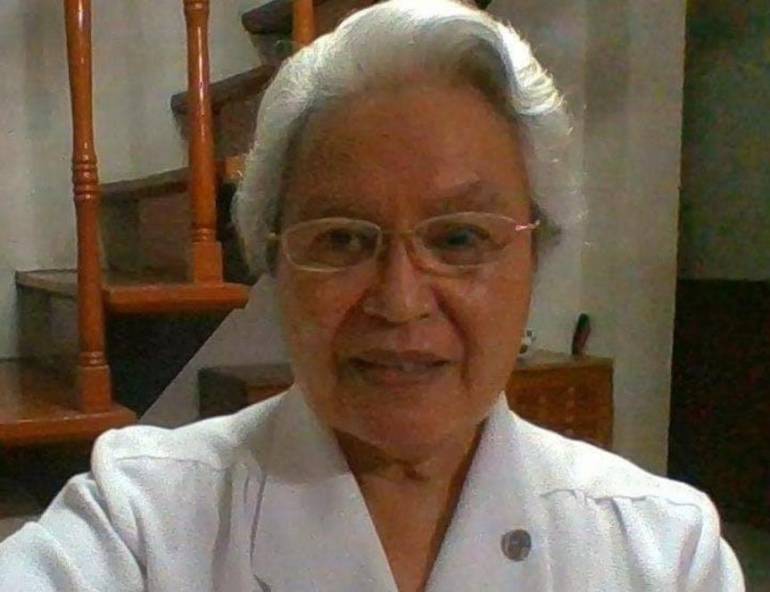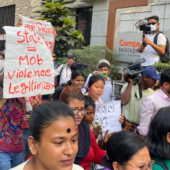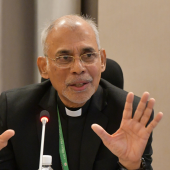Women in Mission

Sister Milagros Montessa, a member of Franciscan Missionary of Mary (FMM), delivered a presentation with the title of “Women in Mission” at the second National Mission Congress held in Cebu, Philippines, from April 17 to 24, 2022.
It was held as the concluding activity for the Jubilee Year celebrating 500 Years of Christianity in the Philippines.
The nun pointed out the status of women in the patriarchal society of the New Testament and the early church was the supremacy of men over women. Women were in complete subordination to men.
Montessa quoted the note of Judette A. Gallares, “The voices of widows, orphans, and foreigners are silenced because they have no status in society. Even if they are seen, they are not counted.”
In Pauline's Literature, women were working side by side with the apostles.
The FMM sister mentioned some names of women who are active and prominent in the early church, such as Dorcas, who actively minded the poor, especially the widows, Aquila and Priscilla, who shared the missionary involvements of all in Corinth, Lydia, who was mentioned by Paul as leader of the Christian Community in Philippi and Phoebe, a deaconess.
Although the women's monasteries were under the control of the male clerical leaders, they achieved to their credit.
She mentioned the three famous abbesses: St. Hilda of Whitby (D.680), Leoba, A co-worker of Boniface, and Walburga because their monasteries were very famous for their studies of the sacred scriptures, their love of prayer, and their pastoral work with the people.
There were many laywomen who contributed to the church’s missionary history. They are involved in various ministries such as a Dominican Catherine of Siena, Margaret Burgess, Mary Ward, Jeanne de Chantal, Louise de Marillac, Patroness of Social Workers, and the first female doctor of the church, Teresa of Avila were well known for their works.
The nun remarked, “The work of such women paralleled the better known male foundations.”
During the time of colonization, everything was despair and frustration. As a remedy, the missionaries, mostly women, educated the natives, introduced science, and took care of health.
Among them, these women saints were well known—Catherine Mcauley, Mother Teresa of Calcutta, Mary Josephine Rogers, Therese of Lisieux, Elizabeth Lange, Anna Dengel, and a Lay woman Dorothy Day.
She remarked, “Dorothy Day is truly a missionary for our times, and her willingness to step into the public place and proclaim in word and deed the good news makes her an important role model for contemporary women.”
The sisters in the United States have moved to new mission commitments as a response to new challenges.
Montessa said, “Their previous living situations in convents or monasteries ceased to determine what ministries they could undertake. Rather, the ministries they undertook began to determine where and how they lived.”
She highlighted the Second Plenary Council of the Philippines, “The history of many religious women is also the story of the strength, competence, resourcefulness and natural abilities of women.”
In the Philippines, there are 273 active religious congregations and 28 secular institutes and lay associates. About 31 of these are locally founded.
The nun said that there are women religious congregations that focus their mission on women and children. These women missionaries have seen the reality of human degradation of our poor Filipino women.
“With great courage and commitment to respond to the call of mission in places where grace seems to be absent, these Women Missionaries offer their lives to help fellow women recover their dignity,” she added.
Despite all of these painful past experiences of discrimination, criticism, subordination, oppression, and suppression, their persistence found ways to have their mission efforts accepted. The reason is they know that their mission as women missionaries is a necessary life-giving element of the Church.
She concluded with the words of the Pastoral Constitution on the Church in the Modern World on the equal dignity of men and women because of creation in God’s image.
“[T]here is here basic equality of all, and it must receive ever greater recognition. Every type of discrimination, whether social or cultural, whether based on sex, race, color, and social condition, language or religion, is to be overcome and eradicated as contrary to God’s intent.”
Montessa said, “Today women in the mission are now sought after by the church authorities.”
Radio Veritas Asia (RVA), a media platform of the Catholic Church, aims to share Christ. RVA started in 1969 as a continental Catholic radio station to serve Asian countries in their respective local language, thus earning the tag “the Voice of Asian Christianity.” Responding to the emerging context, RVA embraced media platforms to connect with the global Asian audience via its 21 language websites and various social media platforms.











